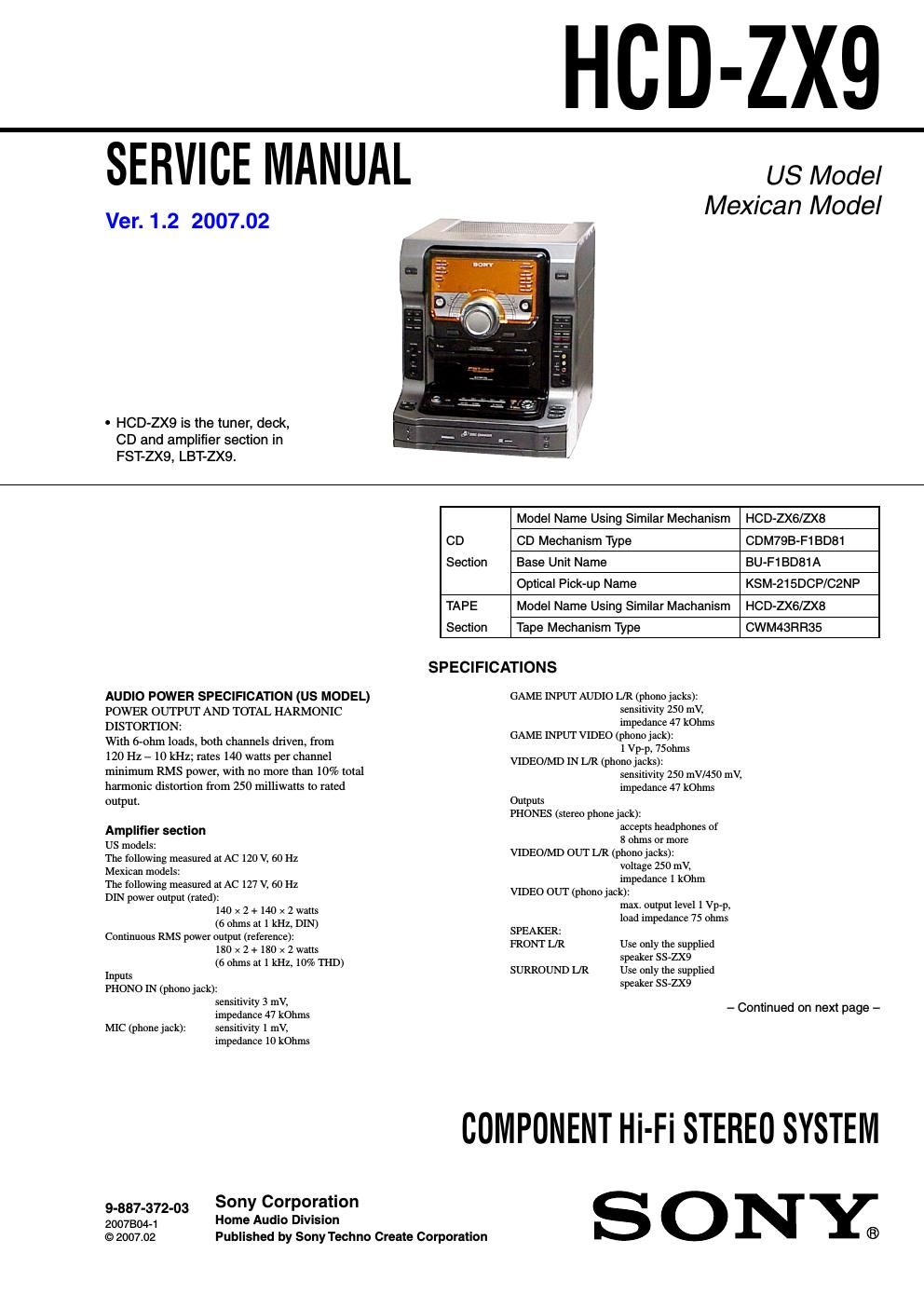Sony hcd zx 9
This is the 94 pages manual for sony hcd zx 9.
Read or download the pdf for free. If you want to contribute, please upload pdfs to audioservicemanuals.wetransfer.com.
Page: 1 / 94

This is the 94 pages manual for sony hcd zx 9.
Read or download the pdf for free. If you want to contribute, please upload pdfs to audioservicemanuals.wetransfer.com.
